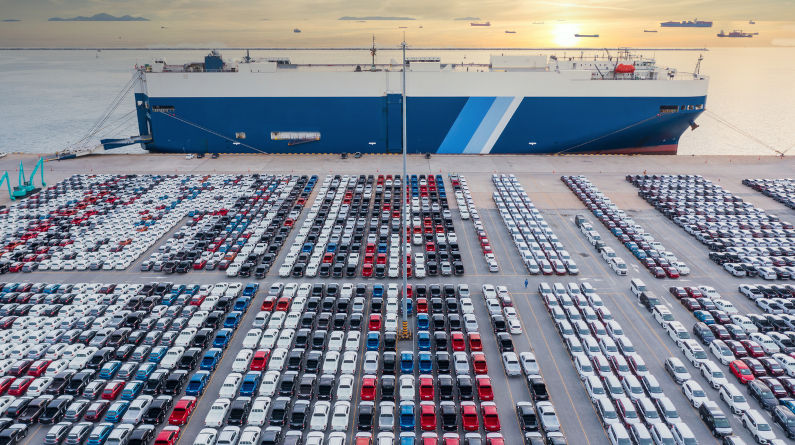What does China's electric vehicle rise mean for the global market?
April 20, 2024
Chinese smartphone maker Xiaomi recently unveiled its first electric vehicle (EV), the SU7, igniting a spark of excitement. At the launch event, Xiaomi’s founder and CEO Lei Jun, whose vision includes creating “a dream car on a par with Porsche and Tesla,” said that from design to batteries, intelligent driving to cockpit controls, the SU7 was a product of pushing boundaries.
The launch triggered intense online discussion, instantly becoming one of the most popular topics on Chinese social media. Lei Jun’s Douyin account, for example, saw an influx of over 1.6 million followers within a week, demonstrating the fervor in Xiaomi’s automotive venture.
The market’s positive response was immediate: the Xiaomi SU7 garnered almost 90,000 substantial orders within just 24 hours of its release; Xiaomi’s stock jumped by 16 percent on its first trading day post-launch.
International media also have noted Lei Jun’s bold move into car manufacturing. Business Insider remarked, “Apple abandoned its electric vehicle project. Now, one of its biggest rivals in China is showing how it’s done.”
Xiaomi’s debut is poised to energise China’s EV sector. The release is expected to incentivise a new round of market competition that will benefit consumers. Recent price adjustments across various brands after Xiaomi’s launch, from the Huawei Aito M7 to the 2024 Xpeng G9, demonstrate the dynamic nature of China’s EV market.
But the impact extends beyond China. Better and more affordable Chinese EVs are a boon for overseas consumers too. China’s EV exports have seen a significant rise in recent years, with data showing a 77.6 percent increase to 1.2 million vehicles in 2023.
The reason electric vehicles produced in China are popular is that they come in a wide variety of models, offering more choices for consumers. They are equipped with rich software and hardware features, allowing consumers to fully experience the convenience and comfort that smart cars provide.
Despite the initial success, Chinese EVs are facing considerable challenges abroad. Creating products that better cater to the preferences of overseas consumers can count as one. But, a bigger problem comes from protectionist policies imposed by the West.
Since October 2023, the EU Commission has been carrying out an anti-subsidy investigation into the imports of battery EVs from China, threatening to impose retroactive tariffs if it later concludes that made-in-China EVs, including those of Tesla, BMW and other foreign brands, benefit from unfair advantages. Moreover, the United States accused China of flooding global markets with “subsidised” green energy products, including EVs and solar panels.
In response to U.S. Treasury Secretary Janet Yellen’s recent claims over China’s industrial overcapacity, Chinese Deputy Finance Minister Liao Min used Chinese EVs as a prime example, stressing that “the current production capacity is far from meeting the market demand.” Liao said he believed trade protection measures will not help in addressing the issue of industrial production capacity, and called for “pragmatic” and “rational” policy decisions.
The fierce competition in China’s new energy vehicle market, including price wars and fast quality improvement, is not caused by the so-called “overcapacity.” There is still huge room for growth in China’s third- and fourth-tier cities and rural markets, which will provide sufficient demand support for the supply of new energy vehicles in the long term.
In a report early this month, Bloomberg found that there is no data backing China’s alleged “overcapacity” in the EV sector, adding that Chinese companies are more efficient rather than loaded with excess capacity. Actually, Chinese EVs are not cheap overseas. For instance, BYD’s EV sedan Han is around 70,000 euros in the Netherlands, while Tesla Model 3 long-range edition is sold at about 52,000 euros.
Chinese EVs also align with the European Union’s ambition of becoming the world’s first climate-neutral continent by 2050. According to the European Green Deal, all new cars and vans registered in the EU will be zero-emission by 2035, de-facto banning cars and vans with internal combustion engines except e-fuel ones from registering and providing huge space for EV development in the bloc. By adopting these sustainably designed EVs, including those made in China, Europe can move faster toward a decarbonised economy.
The expansion of Chinese car manufacturers into global markets underscores a broader narrative of China’s rise as a technological and industrial powerhouse. And, China’s latest accomplishments in the EV sector are not a threat. The application of new EV technologies, ranging from battery efficiency to intelligent driving solutions, offers valuable insights and inspiration for European manufacturers.
There are already numerous instances of China-Europe collaboration in the EV sector. Xpeng joined hands with Volkswagen and their jointly developed SUVs will be launched in 2026. The world’s largest battery maker Contemporary Amperex Technology (CATL) based in Ningde, east China’s Fujian Province, is a supplier for BMW, Mercedes Benz and Volkswagen.
Increased competition from China would help Europe’s carmakers produce better cars in the long run, said Ola Kaellenius, chairman of the board of management of Mercedes-Benz Group, in a recent interview with the Financial Times, adding that protectionism was “going the wrong way.” Chinese companies looking to export to Europe represent a “natural progression of competition and need to be met with better products, better technology, more agility,” he added. “That is the market economy. Let competition play out.”
Over the last two decades, China’s automotive sector has shifted from hosting foreign automakers’ joint ventures to being pioneers in the EV domain. This evolution, as demonstrated by initiatives like Xiaomi’s, is not merely about business expansion – it represents a bold statement of China’s commitment to sustainable development and its companies’ dedication to delivering better products to consumers.
